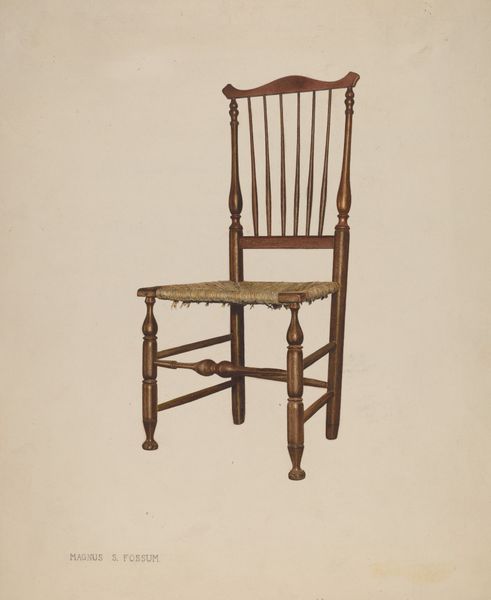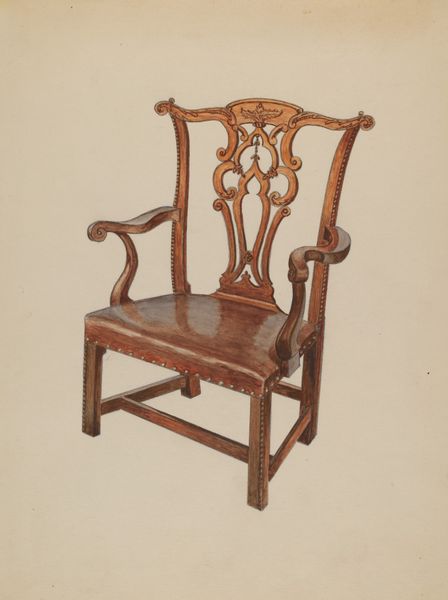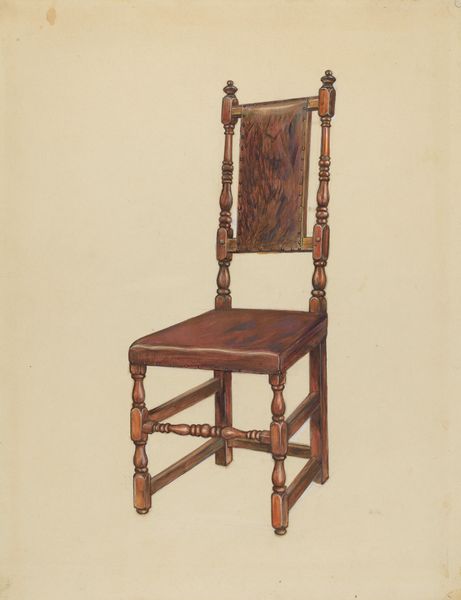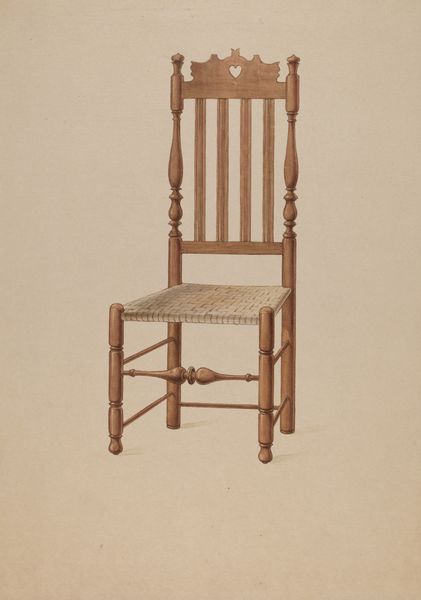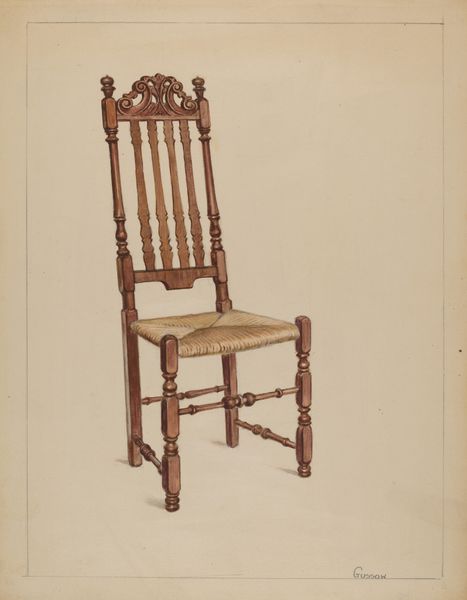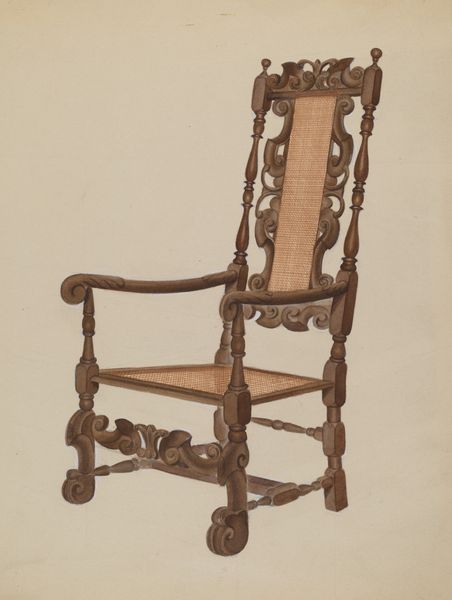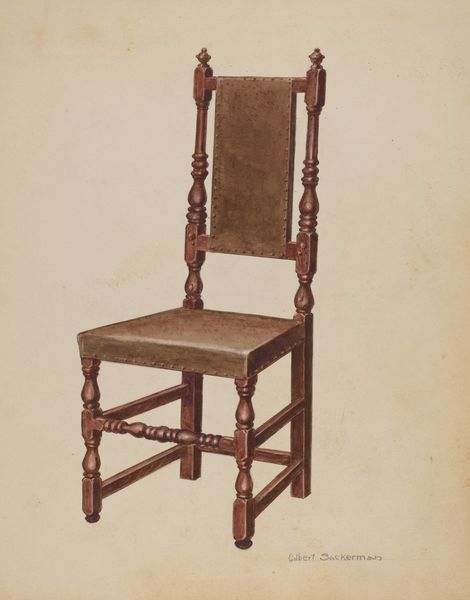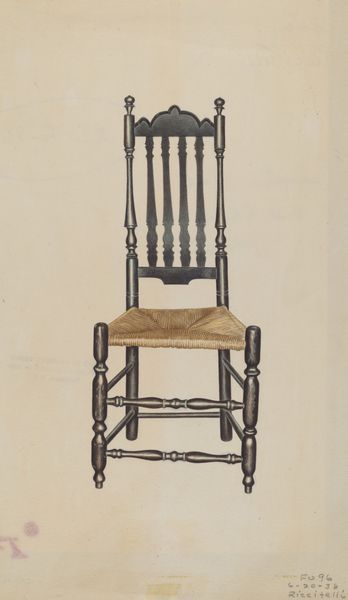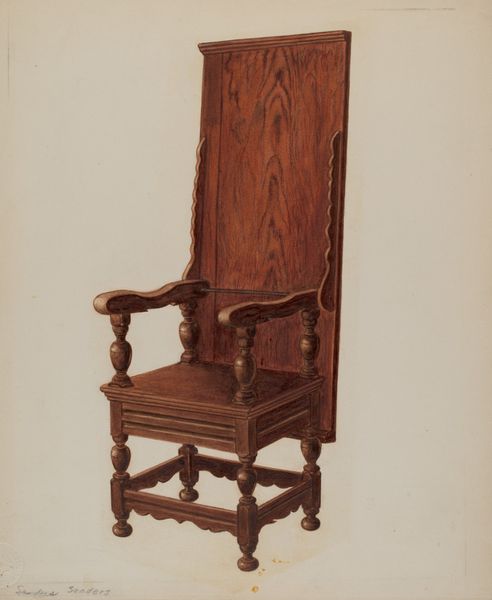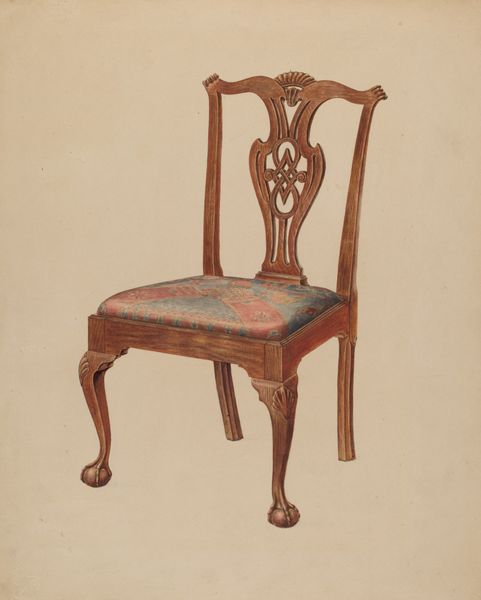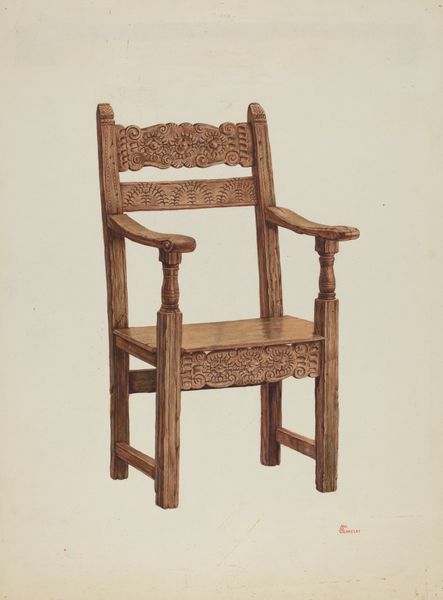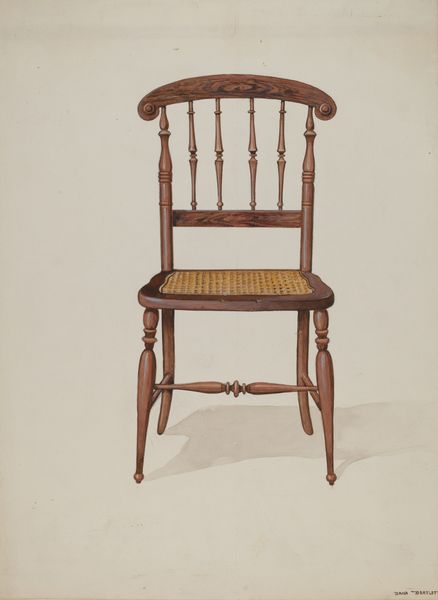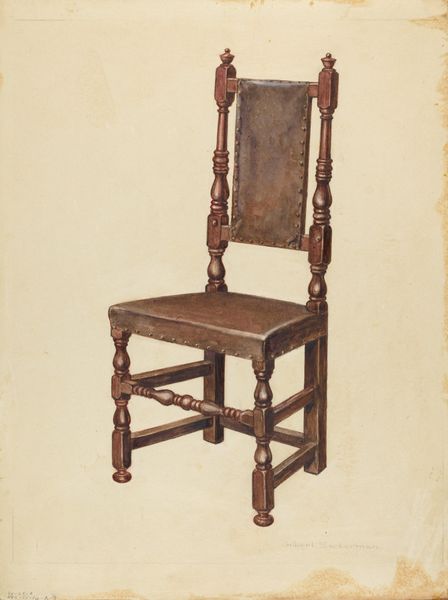
drawing, painting, watercolor
#
drawing
#
painting
#
watercolor
#
watercolour illustration
#
academic-art
#
watercolor
#
realism
Dimensions: overall: 35 cm (13 3/4 in.) Original IAD Object: 37 1/2"high; 18"wide. See data sheet for details.
Copyright: National Gallery of Art: CC0 1.0
Curator: So, before us we have Frank M. Keane's watercolor piece, "Rocking Chair with Rawhide Seat," dating from around 1938. What strikes you first about this image? Editor: Well, the emptiness is what hits me immediately. This chair is rendered with care, almost reverence, but it’s clearly seen better days. The rawhide seat is torn, and the wood itself seems worn. It speaks of labor, and perhaps its end. Curator: Absolutely. Consider the period. 1938 sits smack-dab in the midst of the Great Depression. How might this domestic object, the rocking chair, acquire broader social significance in that context? Editor: I'd argue that it becomes a potent symbol of both comfort and deprivation. It is what someone probably used day in and day out for a repetitive task, likely low-paying. The fact it's rawhide means it's part of industries linked to animal labor, land exploitation and food provision. Notice how much weight the artist puts into it, really honing in on how materials are put to work until their breaking point, until they’re worn down? Curator: Indeed. There’s a stark realism here, wouldn’t you agree? The academic approach seems deliberately chosen to highlight those worn details, those rips and tears, rather than conceal them or present a romanticized image of rural life. It also stands to emphasize what an oddity it is to produce an elaborate watercolor artwork portraying something whose value, from an art market point of view, is effectively nil. Editor: Exactly! And that emphasis forces us to contemplate the very hands that created, used, and now document this object. Whose labor made the chair itself? Whose labor maintained it until its decline? Whose labor is it now to document it in art, elevating an item like that as a way of questioning value? The piece pushes us to think of the chair not just as an object of art but as an item bearing a narrative. Curator: I find myself reflecting on the act of preservation, both of the chair's memory and its image, but that act raises a complex array of questions of power, class and historical memory. Editor: For me, I wonder if, through focusing on this single item of furniture, that in itself isn't what enables us to confront labor and obsolescence. A challenge that still haunts us now.
Comments
No comments
Be the first to comment and join the conversation on the ultimate creative platform.
